Although we are transitioning into the new economic era and Web 3.0, still, we have to deal with many problems associated with the current era.
Saturated markets, high competition, a deification of profits, millions of advertisements that don’t add value to our lives, dropping quality to reduce costs, and brands that don’t connect with customers are just a few examples.
As you can see, the environment is not very friendly for new product launches.
But even the most successful and multi-million dollar brands launch products that fail.
So, how do we organize and run a profitable, successful product launch?
We need to have a vision and clear goals, a well-though launch plan, a solid and comprehensive strategy, a high-quality product that adds value and can improve people’s lives, unique brand positioning, a proven framework for product launches, and a strong online presence to build awareness, anticipation, and excitement before we launch the product.
The good news?
In this article, beyond explaining product launches in detail with various examples, I’ll be revealing a winning formula that I and thousands of other business owners are using to launch products successfully in all kinds of markets – in contrast to the awful statistics of the majority of brands.
It’s a massive weapon in the hands of small business owners to compete with and even outperform big companies.
Let’s dive right in!
Launching Products Like a Pro
Video Trailer
Quick Navigation
- Definition of a product launch
- Product Launch Stages
- Research, Evaluation, Planning
- Innovation & Branding
- Product Development
- The Launch
- Product Launch Models
- The Next-Level Launch Model
- Strategy
- Launch Phases
- Tactics
- Types of product launch events
- The Next-Level Launch Model Webclass Replay
- Product Launch Strategy | 1-on-1 Clinic
Definition of a product launch
A product launch is a set of operations that we use to introduce new products to the market.
The success of a launch depends on a multitude of factors and we can’t precisely predict how the market will respond but there are ways and strategies to help minimize risks, eliminate mistakes, and increase the chances of a wonderful outcome.
For big companies, it’s essential that all teams and departments (product development, marketing, sales, administration, customer support, managers, and so on) are unified and work together toward the end goals.
For small businesses that can move forward fast, things are easier as in this case, there is more direct communication and a more personal working environment.
Successful product launches give us tremendous momentum and can increase interest and sales for other products that we developed.
We also get visibility and exposure, build awareness, trust, and a customer base, and attract followers, fans, influencers, and potential joint-venture partners to expand our horizons.
On the contrary, failed launches can create a bad image, and result in lost revenue and missed opportunities, among other things.
According to Nulab and Harvard Business School professor Clayton Christensen, there are over 30,000 new products introduced every year, and 95% fail.
Think of any huge brand, not all of their launches are successful.
But I know that we can change the statistics.
New products introduced every year
%
New products that fail
Product Launch Stages
Research, Evaluation, Planning
Before we decide to develop a new product and release it to the market or when we improve a current product or offer, we go through a research and testing phase.
We need to set strategic goals, research what the market – our ideal prospects need, evaluate our current position in the market, analyze our assets, and spy on the competition.
We don’t want to launch a product that fails. Remember, 95% failures.
That means we have to be sure that there is demand, potential for profits, and enough space in the market before we move on to product development.
Plus, we need a vision and the mindset for success and we want to come up with a plan – a strategy to reach our goals.
The How: “7 Ideals” 1st Phase
In my methodology, the first phase – 7ID Zone, the phase of research, evaluation, and planning for the future sets the ground for all the other phases and it’s the most important.
It’s also the phase of getting the right mindset for success and we offer an extra layer of private training to help entrepreneurs hone their skills.
We start by setting our brand’s strategic goals.
What exactly are we trying to achieve? Where should we focus? What is the timeframe? and so much more.
We go beyond numbers to identify where we can deliver the best value, our business’ strengths and weaknesses, possible areas for growth, potential threats, and which segments of the market to target.
We identify our target audience(s). We create customer avatars by researching demographics, psychographics, interests, hobbies, needs, wants, desires, and aspirations, and we begin identifying problems and issues that exist in the market by performing market research.
Every marketing approach, methodology, and strategy that brings results starts with research. Whether you want to start a new business, scale an existing one, expand upon new audiences, create new products or improve your current product line, research is the ultimate weapon.
Market research is a multi-dimensional process that helps brands get a deeper understanding of people’s needs, wants, frustrations, problems, and aspirations.
It helps us identify gaps and hidden opportunities in the marketplace.
Market research helps brands make well-informed decisions in order to develop and design products that the market needs, improve their current product line, validate business ideas, reduce production costs, gain insights into the competition, and so much more.
More importantly, research provides us with rich data and helps us craft a unique selling proposition that caters to our target audience, so we connect with prospects more effectively and gain a competitive advantage.
And we create a sweet area, the “IDeal” zone, it’s the spot where our goals and our customers’ needs meet. It’s the excellence zone where our brand and our customers can thrive.
We analyze the market and the competition (online and offline).
We perform keyword research, examine the trends and the demand, and start making predictions.
We join communities, forums, networks, and platforms, investigate pricing and other important metrics for our final product or service, compile a list of competitors and their suppliers, vendors, and merchants, and research complementary products/services.
We analyze our business itself.
We conduct business and brand analysis, evaluate our current assets, set superior standards for product development, set the standards for high-quality customer service, conduct business model component analysis, design an economic plan and get access to finance if necessary.
We define the platforms and communication channels (online and offline) that we are going to use and we design the buyer’s journey to address all the stages of the marketing/sales funnel. It’s a map that shows all the steps a customer takes before, during, and after a sale.
We offer an extra layer of training through private workshops. This training will help you become an unstoppable entrepreneur and gain unparalleled momentum.
As a business owner who wants to impact the world, you need a vision and the mindset for success – don’t underestimate those factors. Too often, business owners with the greatest ideas, me no exception, were not ready for a launch.
Don’t worry, it happens.
We deploy and shape our overall strategic plan.
A roadmap that will help us reach our end goals, and will help our brand evolve and thrive in the competitive marketplace.
A guide that shows where we are, where we want to go, and how exactly to get there.
It’s a document that describes our key objectives and goals, activities, key performance indicators, responsibilities of each team or department, and more.
It’s the stage where we actually make assumptions for the future trying to identify our next major strategic moves and we start shaping a “Plan B and C…”. Alternative routes that we can take in order to progress and grow in an ever-changing and dynamic environment.
All our business operations are strategically organized (management, marketing, sales, research, analysis, testing, improvements, customer service, partnerships, and so on).
Our roadmap is constantly evolving as our brand grows.
Let’s recap – we set our goals, we identify our target audience and start visualizing what they want and desire, we analyze the market and the competition, we analyze our business itself, we realize where we are and what the competition does, we identify problems to solve, define the platforms and communication channels that we’re going to use, design the buyer’s journey, we get ready and prepared for a huge launch, we get set for success, we look ahead with confidence, and we deploy and shape our overall strategy – a roadmap to follow.
The 1st phase, the 7ID Zone is divided into 7 categories:
- IDeal Zone
- Industry
- Business
- Marketing
- Testing
- Entrepreneurial Excellence
- Strategy
I describe everything in detail on the main framework page.
Innovation & Branding
Now that we know where we are and what the market wants due to our research in the previous stage, we start coming up with ideas for product development.
And remember, we also want to innovate, there is fierce competition.
We brainstorm product concepts that will help solve the problems, issues, and challenges people have in the marketplace.
We are not in the business of developing products to satisfy our ego, ambitions, or family and friends.
We are in the business of developing products that people need.
We have to meet their needs with our products and exceed their expectations.
We are in the business of filling gaps in the market.
When we are able to define an unsatisfied group of people and meet their needs with our product and our messaging, we become an authority brand, a leader that people follow.
An unsatisfied group of people is a unique chance to build a community of raving fans that will praise our brand forever.
This is the phase where we innovate in order to bring something new to the market. It doesn’t have to be a technological advancement or any other complex system, we just want to find new ways of serving our clients. Better ways of covering their needs.
This is also the phase where we perform various tests to collect valuable marketing data and feedback in order to improve the product’s benefits and features.
The How: “7 Ideals” 2nd Phase
In my methodology, the second phase, the Big IDeas, as the name suggests, is the phase where we come up with big ideas and not just for product development.
Without those big ideas, we can’t build the base of a thriving brand and we can’t innovate and serve our prospects better than our competitors.
As David Ogilvy, the father of advertising once said…
It takes a big idea to attract the attention of consumers and get them to buy your product. Unless your advertising contains a big idea, it will pass like a ship in the night. I doubt if more than one campaign in a hundred contains a big idea.
We want to build a leading brand that has a vision and without those big ideas, people would not relate to our story.
It’s the phase where we start innovating so we can further differentiate and provide massive value to the marketplace.
We develop info-products, and temporary marketing funnels to perform various tests so we can collect valuable marketing data and user feedback before we move on with product development (alpha testing).
No matter what kind of product or service you’re currently offering or plan to offer, you can create info-products to help your prospects and customers better understand what you do and who you are, and showcase your expertise, philosophy, and passion.
We’ll discover the phenomenal power of direct response marketing that brings immediate results.
Moreover, it’s time for big decisions about branding, copywriting, and storytelling that will play a huge role going forward.
It’s about creating a unique brand identity, demand for your brand as a whole, – and a belief in customers’ minds that something special exists.
It’s the stage where we develop our own unique voice using the “ID Experience Framework” which connects the 1st and 2nd phase.
For example, here, our unique brand positioning is the “7 Ideals” methodology itself. This is how we differentiate from the competition, providing marketing services in a distinctive way.
We define, articulate, and communicate our core company’s values in a way that every team member is welcomed, appreciated, feels understood, and that their work is absolutely meaningful.
It’s a system of beliefs that drive every activity, behaviour, and interaction with the market.
We establish why we do what we do and what we stand for.
When we have a strategy in place and a set of values that our team members respect and practice, no one can stop our progress and growth.
It’s also about communicating your beliefs, values, and standards, and expressing a brand’s vision.
It’s about creating a buzz around your brand. Getting people to discuss your brand. It’s about creating loyal fans.
It’s also about consistency in behaviour, customer service, marketing communications and material.
Branding is caring about customers, feeling their pain and problems, and expressing empathy.
Branding is authority, owning a market share, and having a mindshare lead in a segment.
Branding is the only way for small businesses and startups to become “big” names, eventually.
Let’s recap: we come up with big ideas and product concepts that can satisfy our prospects and are aligned with our strategic goals, we innovate trying to create something new and differentiate from the competition, we perform various tests to collect data and feedback that will inform the product development process, we craft our own unique brand voice, and we define our company’s core values.
We start deploying direct-response marketing techniques to get prospects to take immediate action, we develop info-products and temporary marketing funnels, we apply copywriting and storytelling frameworks, and work on our image, our branding, our brand’s identity.
There’s more information on the main framework and the basic principles pages.
Product Development
Now that we know where we are and what the market wants, now that we have a vision for the future, a strategy to follow, and a unique and strong brand voice to interact with the market – a brand identity, we start utilizing our ideas for product development.
We want to provide the best possible experience to the end consumer and that can’t happen if we sacrifice quality.
High quality equals trust, bond, and satisfaction.
When people trust your brand, you gain momentum. When they are satisfied and feel connected, they share their favorite brands with their friends and network so we gain publicity and visibility.
Improving our quality should be our #1 priority if we want to increase our customer base and build a strong reputation.
We base our decisions on data, evidence, facts, research, and of course, intuition.
We are listening to customers, interacting with the market, and always testing things out.
In this phase, we use beta testing to evaluate our products’ performance in real-time in the real world from people outside our organization.
We release limited versions of our product so we can get feedback and responses from the market before we go ALL IN!
Testing, refining, and improving our products is a never-ending process because we care about our customers and of course, we want to impact the world as much as we can.
The How: “7 Ideals” 3rd Phase
In my methodology, the third phase, IDeology, is the phase where we create our unique system of ideas and ideals that form the basis of our proposition.
Our products/services and offerings make up this system, these are the ideas and ideals that we’ll share to improve people’s lives.
To do that successfully, we need to meet some criteria and we’ll go through this phase’s frameworks to accomplish that.
We want to solve problems, help people with their challenges, educate and entertain them, relieve or soothe pain, and cover their needs, wants, desires, and aspirations.
When we add quality to people’s lives, they become our brand’s evangelists that live by our IDeology.
This is the phase where we deploy amazing, crushing offers that the market begs us to create.
Our products, services, and offers formulate our IDeology, a system of ideas and ideals that serves the market, is focused on the end consumer, and provides value.
The “7 Ideals” system works for any kind of business and industry.
- Information and digital products
- Professional services
- eCommerce/Physical products
- Membership sites
- Software
- Offline stores
- Artwork
- Affiliate promotions
- and so much more
The Launch
Now that we know where we are and what the market wants, now that we have a vision for the future, a strategy to follow, a unique and strong brand voice to interact with the market – a brand identity, and a product to deliver, we move on to the launch phase.
Now, things are getting really exciting.
We are about to release our amazing product to the market and this is a moment of truth. How is the market going to respond? Is it going to be a successful launch or will we fail?
Now, although there are countless things we need to have in place, and of course, every detail matters, and we will give our best…all in all, we don’t want to overthink the whole process.
Eventually, we need to launch no matter the level of preparation. Even if we are not 100% ready, it’s time to launch.
We’ve gone through researching, testing, improving, and refining, and we developed the product.
Now we need to move forward with confidence and launch.
The How: “7 Ideals” Launch Frameworks
In my methodology, the 4th phase – IDentity, and the 5th phase – the 7 Ideals “Machine”, is where we deliver our products to the market, interact with consumers in real-time, distribute content on various platforms, attract prospects into our world – our ecosystem, build a social image, organize and run amazing live events, and we build a well-oiled marketing machine to promote our brand, attract and convert ideal – right-fit clients, maximize sales, create a competitive advantage in the market, increase customer satisfaction, and so much more.
Now, let’s focus on product launches.
I use a variety of product launch strategies and frameworks and today I’ll be sharing a winning formula that works like crazy as well.
Product Launch Models
There are 2 main product launch model categories:
- An open cart model (the product or service is available at all times – an evergreen offer, an offer that doesn’t expire)
- An open/closed cart model (the product is available for a limited time throughout a year and/or there are other restrictions or limitations)
Which one? Pros and Cons
↑ Open Cart Benefits:
- People can buy the product whenever they want
- Easier accessible
- You avoid the rush and pressure associated with closed-cart models
- The product earns you income non-stop
↓ Open Cart Disadvantages:
- The product launch doesn’t create fear of missing out (FOMO) because there is no expiration date for your offer
- A percentage of people will stay undecided and won’t proceed with a purchase because they can get it some other time but usually, they never return
- The launch is not creating the feeling of exclusivity
- Consumers are more vulnerable to distractions and they forget to buy
- We need to sell harder (being pushy) to get it to the hands of consumers
↑ Open/Closed Cart Benefits:
- The launch creates scarcity and fear of missing out (FOMO) so that people buy before the deadline
- This launch is an event that creates anticipation and excitement
- We build trust with our target market and gain almost instant authority
- We build reciprocity
- We speed up the decision process
- People can participate in the product-making process (if we follow the winning formula – see below)
- You get to make a lot of sales in just a few days
- It’s an exciting experience that you have to witness first-hand
↓ Open/Closed Cart Disadvantages:
- It takes hard work for a short period of time
- It might add stress and anxiety.
- High levels of adrenaline
- Energy-consuming
- Retention rates may be lower because some of the prospects will buy on short notice – under pressure
What the majority of brands are doing
There’s no concrete answer on which launch model you should follow. It depends on the product, the industry/competition, your goals, and what the market wants right now.
The majority of product launch frameworks will guide you to take all the necessary steps to research the market and the competition, develop a product, and then deliver it usually during a 1-day live event – it might be a conference, a speaking event, or any other presentation where you announce the release of the product to the market.
And then the product enters the market and people can buy the product at any given time, throughout the year.
And those methods work but not very successfully for brands that are not established yet. These methods work great for well-known brands that have an army of customers and endless budgets to spend on advertising and live events.
People know what to expect and as they trust these brands, when a new product is released, they go out and buy it.
But what happens if you are a small business owner or if you just starting out a new business endeavor?
You may offer an amazing product but you won’t be able to run a profitable product launch without establishing your authority first.
Without connections in the market, without a conversation with your prospects, and without building buzz and anticipation, your new product will flop.
And even if you are an established brand and you already run successful product launches, I know there is a better way to launch your products…
Because – I have to say it, the traditional method of launching products is boring. people had enough of those launches.
They expect something more – beyond a quality product or service. They seek interaction, engagement, and a personal touch, and most importantly, they want to participate in the whole process.
That’s why I want to introduce you to the winning formula that is specifically designed for aspiring entrepreneurs that are just getting started and small business owners with small budgets but big dreams – those are my right-fit, ideal clients.
The Next-Level Launch Model (the winning formula)
The formula is not as complicated as the one in the photo. I picked this photo to highlight that this is serious stuff.
So, let me reveal the winning formula I use since 2019 non-stop with incredible results every single time.
Here’s what makes this formula different:
We do not launch the product right away without building buzz and excitement early on.
And that can’t happen overnight. We need some time with our prospects to tease their curiosity and get them to express their interest.
We do not organize and run 1-day events just to get media coverage and release the product to the market.
We take our prospects on a journey.
It’s a story where they are the heroes, the leading actors – the protagonists.
No matter what tactic or technique we are going to use for the launch, the strategy remains the same and it’s all about building anticipation, excitement, and buzz around our brand before we release the product to the market.
We have a solution that the market needs due to our research and testing protocols in the previous stages but if we launch the product with the traditional route we are going to fail, most of the time.
We are not going to sell right away. We will get to that point gradually, we will take our prospects on a journey step-by-step, and release the product at the right time via a highly-irresistible offer that they won’t be able to refuse.
Strategy
In my methodology, I use a hybrid version of the 2 main product launch models I referred to above.
I use a combination of an open cart and an open/closed cart model.
I use this hybrid model with various types of product launches (soft, hard, seed, live XP, and more – see below in the types of product launches section).
I begin with the open/closed cart model, meaning we’re launching a product that is not available at all times.
The cart is open for a limited time and then the offer goes away completely.
Alternatively, we might add other restrictions and limitations, like one-time huge bonuses that are going away at the deadline, discounts that are going away, and so many other tactics and techniques.
And then, after a few months, not right away, we create an evergreen offer that never expires.
Now, the limited edition using the open/closed cart model is a more advanced version of our product. It’s a better product with more features, and more bonuses – it’s a more expensive or luxurious version if you will, a more complete package.
The evergreen offer that sells throughout the year is a more restricted version of our product.
We get the best of both worlds…
We keep income coming in at all times with the evergreen offer and we do product launches using the open/closed cart model because they are exciting, we gain unparallel momentum, authority, and trust in the market, and we get to make way more sales in a short period of time due to the increased levels of curiosity and scarcity.
It takes more work to organize and run such a launch but the outcome and payoff are, more often than not, incredible.
This model works like clockwork even for established and huge brands but it’s a massive weapon for small business owners with small budgets and startups.
I’ve seen this formula working thousands of times with phenomenal results for various brands and businesses in any industry.
And although these brands could have an evergreen offer in place, many of them don’t.
They do product launches once or twice a year and that’s it.
Now, the reason we organize first the open/closed cart model is that sometimes, the number of sales we get to make during the limited launch period – when the cart is open, exceeds our expectations.
It’s a wonderful feeling!
But after the sales, we need to devote ourselves to our new customers and delight them by providing superior service. When you invite a big number of new customers to your ecosystem at once, you need to make sure you are prepared to take care of them.
I was helping a brand with their launch last year using the open/closed cart model, and it was a huge success…but as new sales were coming in from the very first day that the cart was open, and thousands of people were using their education platform, the platform collapsed.
There was no room left for new customers and they had to deal with unpreceded technical issues and problems.
Hopefully, only a small percentage of customers were canceling and demanding a refund.
It could have been worse.
Now, in case you already have a product that is being sold throughout the year, then we will use it to create an irresistible evergreen offer along with any necessary improvements and iterations.
And then we’re going to create a limited version of your product – another version, more advanced, and we will organize and run a launch using the open/closed cart model.
One core element of this strategy is putting the customer first – at the center, and this approach helps us eliminate guessing and hope.
We are not going to guess what people want and develop products based on hope.
We are not going to develop products and then hope that the market responds.
That’s why we use a customer-centric approach.
With a customer-centric approach, we focus on the end consumer and the market. We devote time and resources to research the market, the competition, and our business itself. We perform tests, collect feedback, and start discussing with the market and potential customers in real-time.
During our testing phase, we tease people, ask a lot of questions, and get answers…
and based on those answers, we develop a product that the market needs right now.
This is key for a profitable product launch.
I’ve seen so many times business owners developing amazing products, me included, and then getting disappointed due to a multitude of reasons…
Here, we are giving people exactly what they need.
Another core element of this strategy is delivering massive value to the market and more often than not, we overdeliver on our promises.
We follow the high standards of the business code of conduct.
We do not deceive, defraud, cheat, or mistreat people, animals, and the environment.
We do not speculate in the market or take advantage of circumstances to skyrocket our profits at the expense of others.
We do not make false product claims, we do not hide terms in our agreements, and we do not practice unethical accounting just to attract investors or save tax money.
We do not provide poor working conditions and we respect everyone in our company.
We play fair, we do not defame or discredit other brands, we do not need unfair economic advantages, and we do not bribe politicians, journalists, accountants, or people.
Another core element of this strategy is building curiosity, anticipation, and excitement before and during the launch.
We want to connect with our prospects on a deep emotional level to build trust and position our brand as an authority – as a leader.
We’ll get people hooked immediately, and they’re gonna love and enjoy the whole process because we already know exactly what they want due to our research in the previous step.
Isn’t that beautiful?
We don’t just push products to their faces, we’re making connections, valuable connections first.
That’s exactly what this formula is all about.
Another core element of this strategy is creating scarcity.
And we do that by distributing our product only for a limited time – a very specific period, and then we shut down the offer.
Now, in the case you already have a product that you sell to the market, and maybe it’s a product that you sell it all year long, every day, non-stop…
In this case, we are going to use a different approach.
We are going to create a limited edition or another – a different version of your product and we are going to launch it – this limited edition for a certain period of time, and then we are going to remove this version of your product from the market…
and then we are going to repeat the process next time (usually next year)…
Now, thousands of business owners that used this method have realized that when you create a limited edition of your product and you release it to the market for a certain period of time, and then this offer goes away…
maybe it’s 7 days or 10 days, or 20 days depending on the product and the industry…
this whole process creates so much scarcity, and people are afraid that they are going to lose this incredible offer, so they are doing everything they can to get your product before the deadline.
And you’ll see a dramatic rise in your sales and in your data…for example, you’ll see a rise in engagement rates and customer satisfaction, and so on.
And I’m definite that you’re going to adopt this formula for your business, hands down.
Another core element of this strategy is selling ethically, in a non-hypey or slimy way, providing value, guiding, and helping our prospects and clients all along the buyer’s journey.
Every touchpoint, every platform, every transaction, every contact, every discussion and interaction with strangers, prospects, customers, fans, employees, suppliers, vendors, partners, other business owners, and affiliates matters. And it matters a lot.
We abide by ethical business practices. We do not behave in a way that is morally wrong.
We help, educate, and entertain strangers, prospects, and customers by providing superior content on a multitude of platforms and we organize unparallel live events that they’ll remember for a lifetime.
Another core element of this strategy is being authentic and transparent.
Truth is the only way.
We are not going to use marketing tricks just to make people buy something they don’t really need.
Another core element of this strategy is using a structured sequence of content, and I mean high-value content before we launch the product.
That’s why we divide the launch experience into phases where every phase has a different role in the game (see below, it’s the next section, the launch phases).
Launch Phases
First, we design the launch as a whole – a journey from start to finish.
We want to have an overall picture, an overview of what is going to happen…
and remember, product launches of this kind are always mutable – there are many variables that change, and we might need to adopt and improve the process literally on the go, on the fly.
It’s a live event.
So here are the stages:
- Warm ID zone
- Elevation
- Launch (open cart)
- Delight (closed cart)
Warm ID Zone: it’s all about warming up our target audience.
We do not reveal that is about our product, we want them curious about what’s happening. We start interacting with our audience in real-time to generate early excitement.
We ask a lot of questions, we use emails, surveys, quizzes, and questionnaires, and we organize offline meetings, meetups, and other warm-up sessions.
We are announcing that something big is coming, that we are working on a new project and we start asking questions to get valuable feedback that we’ll utilize during the launch.
We want them to raise their hands and show their interest.
We invite them to share their thoughts, ideas, problems, and challenges so we can deliver a product tailored to their needs.
This is the stage where we build excitement and buzz about our brand.
This phase can last anywhere between 1 week and 1 month, more or less, depending on the product and our target audience.
Elevation: the most important stage that sets the tone for the launch stage, the next one.
It can last 3 to 12 days or more in some cases (for more expensive products where people need a lot of time to decide), and we use 3-5 pieces of pre-launch content (sometimes more or less depending on the duration of this phase) to deliver massive value in advance and build reciprocity, showcase our expertise and authority, and gather invaluable data.
We start demonstrating our expertise by solving real problems our audience deals with.
Those problems that we already know our audience wants to fix.
We share stories of transformation to get people’s attention. Story is a magic mechanism that touches humans like nothing else in the world. People relate to stories as they put themselves in the script.
Every book, film, or event you still remember is due to an amazing story that got you hooked from the very first moment.
We use emotional and empathetic messaging and strong psychological triggers to get people to take action.
It’s a conversation with the market. We will be answering people’s questions and rejecting their objections during the next stage, the launch stage.
We refine the offer literally on the go by listening carefully to our prospects.
Launch (open cart): usually from 1 to 7 days, but it can last longer depending on the product and the industry.
Before we get to this phase, we’ve done everything we could to tease people’s curiosity, build anticipation and excitement, we showcased expertise by solving our audience’s problems, we invited prospects into a beautiful story, and now, if we’ve done everything right, people will start begging to get the product.
Again, we use strong emotional-driven language to inspire massive action.
We paint the end of the journey for our prospects, what our product is all about, what’s in it for them, and what it can do to improve their lives.
We share stories of transformation and case studies, we host Q&A sessions to answer burning questions about our product and the final offer, and we explain everything in detail.
We don’t want our prospects confused by any means, a confused customer is a lost one, one that sets still and doesn’t take action.
We present a crushing offer they will have a hard time resisting.
Our sales page is a work of art. We follow the “7 Ideals” framework to reject any possible objections, encourage people’s dreams, allay their fears, paint the transformation, justify the pricing, and help them stand against a common enemy by using our product.
We offer guarantees to ensure minimum refunds and reverse any risk in our prospects’ minds.
We offer various payment options to suit any budget and make the product easier accessible.
We give away bonuses that add tremendous value and make the offer way more effective.
We infuse scarcity using deadlines and other marketing techniques.
Delight (closed cart): we create a bond with our current customers and provide superior customer service.
We want to provide superior customer service and it’s the only way to choose. It has countless benefits and not taking your customer service seriously will result in huge losses both short and long-term.
We keep the communication channels active and we overdeliver on our promises.
We may offer extra bonuses for fast-action takers or any other perks and prizes.
Our ultimate goal is to turn those customers into our brand’s evangelists.
We are delighting our customers, improving the product line non-stop, and planning for the next launch.
Then, we enter the 6th phase of my methodology, IDiosyncrasy, where we are founding a club for loyal fans.
Here, you’ll discover the phenomenal power of what we call movement-based messaging which is key to positioning our brand as a leader.
The 7th phase, the 7 “IDols”, is all about growing and scaling our business.
Here, you’ll discover a series of growth hacking strategies, tactics, and frameworks.
Tactics
Emotional motivators/Empathetic Messaging:
We use powerful psychological principles that are proven to drive decision-making processes. These are universal standards and by no means we are going to force people into buying.
No, we just draw attention to our brand, our products, and our offerings and invite people to take action.
Psychological triggers affect our emotional state and can be used to influence people’s behaviour.
Emotional marketing plays a vital role in the marketing campaigns of most brands. It is not surprising considering that more than 70% of the time, we make decisions by the typical instinctive subconscious part of our brains, commonly known as our “reptilian brain.“
Emotional marketing is a kind of marketing technique that uses emotional appeals to evoke emotions in the heart of potential clients. The purpose is to build trust and awareness, gain leads, and ultimately convince the customers to buy the business products or services.
We build reciprocity by giving away free stuff and delivering massive value before and during the launch.
We create curiosity so we can attract prospects and get them to take action.
We build anticipation and excitement using a structured sequence of content. Without getting our prospects excited, we won’t be able to sell effectively in the end.
We build our social image by being present and interacting with the market in real-time, non-stop.
We get social proof and recognition as we start connecting with prospects, discussing with them, and answering their questions during the launch. Likewise, when we start collecting testimonials from happy customers, and when other people, influencers, and experts share our brand name with their circle, our expertise and authority is being established.
We build a community, not just a customer base. People enjoy being part of tribes, special groups – families where they can feel like home and express themselves freely.
It’s all about a conversation with our target market. We care about them, and that’s why we are developing products catered to their needs and wants. We care about their opinion, we ask so many questions, and we interact with them throughout the buyer’s journey, and the whole launch process is designed specifically for them.
It’s all about being an alive and personal brand. People had enough of impersonal organisations. We are known for being alive. We organize and run superior live events so our prospects can feel that they are part of something larger than themselves. Heck, the product launches we do are live events. Rituals are event-based and are a powerful human mechanism for managing extreme emotions and stress.
We tap into way more psychological triggers but these basic triggers are more than enough to organize and run killer launches.
We’re building crushing offers that people can’t refuse.
During our research and during the launch we constantly identify and answer people’s objections, there’s no hard selling involved.
We provide a ton of value, educate, and entertain our prospects until they have enough and they literally beg to get the product.
We use an army of marketing methods that are proven, time-tested, and bring awesome results:
- Online challenges
- Quizzes and quiz funnels
- Questionnaires
- Live training
- Masterclasses
- Livecasts
- Consumer events
- Trade events
- Media events
- Webinars
- Seminars
- Presentations
- Case studies
- Q&A sessions
- and so much more
Types of product launch events
There are various types of product launch events that we use to enter a marketplace:
- Minimum Viable Product (MVP)
- Soft
- Hard
- Seed
- Internal
- Joint-Venture (JV)
- Affiliate
- The Live XP Launch (7 Ideals)
- and more
Minimum Viable Product (MVP): a product with the core features – enough features to attract early customers, and functions that can give users a taste of the product.
Extremely practical, we get feedback to validate our product concept and ideas, it works very well for software and other products where development is an ongoing process. It works even greater for professional services and traditional brick and mortar businesses.
Soft launch: it’s also known as beta launch. A product that is released under special conditions to a certain number and a certain group of people (with specific characteristics).
Very helpful for last-minute changes and iterations, it’s usually meant for getting reviews and feedback.
It’s a preview launch and can be used to gradually or partially introduce a new product to the market. This way, you can make improvements and finalize the development of the product while you’re interacting with the market and people are using it.
For example, there are brands that create previews for their films or movies, there are cases where they release a product only to a group of journalists to get media coverage and reviews, and it’s a method that can be used offline as well, in retail stores like restaurants or hotels.
I once helped a tech startup as a beta tester, a platform that helps people design beautiful landing pages. I was probably in my 2nd year online and they approached me and so I had the chance to help them and practice my design skills as well along with the perks and bonuses they offered.
What did they get? They got feedback, we helped them refine the details of their software, they got free exposure as we – the beta users shared our experience with our network, and they started creating a buzz around their brand.
Another example: this is how I launched my “7 Ideals” methodology or sort of.
I launched a beta group last year to get feedback and improve the method, and now I’m launching a 2nd beta group to refine it even further.
It happens that I have limited time as well. But that doesn’t stop me from launching while working with clients privately to upgrade the method.
For this kind of service, a marketing methodology requires constant enhancements and improvements.
Hard launch: it’s also known as a full-scale launch or official release. A market-ready – finished product that is officially released to the public.
It’s an all-in launch, you go out and launch with all your power.
We use this type of launch when we are 100% confident about our product and offers.
If you look around, the vast majority of products and businesses are launched using the full-scale type (although a few of them are 100% ready).
It’s a risky model that you should take with caution.
Seed launch: all credits go to Jeff Walker, one of my mentors and creator of the “Product Launch Formula”.
The seed launch is one of the types of launches Jeff uses.
It works very well for aspiring entrepreneurs with no list and no product.
If done right, you can get paid to co-create the product with the early members of your community.
It works very well as a testing method that you can use to evaluate a new product or new features or as a method to develop a new product altogether.
Internal launch: again, all credits go to Jeff Walker.
This type is used for established business owners with an email list of subscribers and/or a social media following.
It works great if you want to launch a new product as a test internally to your current audience or if you want to relaunch a proven offer.
Joint-Venture launch: again, all credits go to Jeff Walker.
This type is used for established business owners that already run successful product launches but it can be used by aspiring entrepreneurs and newcomers as well.
This is my philosophy, too.
That’s exactly what we do with startups, we always try to form partnerships with established brands to take advantage of their assets and their customer base.
Related:
- Partnerships as the ultimate weapon in business
- A partnership example
- Ideal partnerships for startups
It works great if you’re experienced and have some good contacts in your industry with people who have already built followings.
Here, we want our joint-venture partners to uplift our business, to give us a boost in visibility and authority, and we want to be sure with who we are cooperating.
Many brands use affiliate partners as well and you can discover affiliates either on your own (through your current contacts and associates), through an affiliate/advertising network, through an affiliate manager, or through a marketing agency like WebMarketSupport.
I have huge experience as an affiliate partner. I’ve partnered up with so many brands, affiliate networks, and managers, and participated in hundreds of joint-venture (JV) launches.
JV launches can give us tremendous momentum, instant visibility, and leverage. It’s also a fantastic way to build an email list.
Affiliate partners get paid for sales they help you make, you get new fans and followers, and make way more sales…and lots of people are served.
A win-win-win scenario.
Be careful though: now that you are selling your product to other businesses’ customers, beyond a superior product and user experience, you need to give the very best of yourself, and now you are responsible for their audiences as well.
We take care of our partners and affiliates. We cooperate with them on a deep, personal level. We share resources, organize joint ventures, and train our affiliates live and in-person so they can promote our brand with all their power. We give away prizes, offer countless incentives, and share knowledge, insights, and expertise.
We listen carefully and collect feedback. Their professional opinion matters and it helps our brand grow and become more efficient.
If we organize events with joint-venture partners we give our best to turn them into a win-win-win scenario for everyone. Our brand, our partners, and our participants.
Affiliate launch: we use the next-level launch model to promote other companies’ products and earn amazing commissions while we help other people.
It works great if you don’t have a product or an email list or following.
Of course, it works even better if you’re an established business owner with a list and following.
The Live XP launch: the live experience launch.
As the name suggests, it’s a live experience.
I will be explaining this launch type in my upcoming webclass.
Who is it for
The good news is that this formula works whether you have a business and want to take it to the next level, or even if you don’t have a business at all.
And it works if you don’t have a product to sell, yet, if you don’t have an email list of subscribers, or even if you don’t have any ideas for product development.
And it works for any industry, any niche, any market:
- Physical products
- eCommerce
- Dropshipping
- Digital products
- Membership sites
- Offline stores
- Traditional brick & mortar businesses
- Affiliate promotions (you don’t need to develop your own products)
- Services: coach, consultant, practitioner, etc.
- Authors who want to publish books
- Artwork
- and so much more
It doesn’t matter, it works like crazy…I’ve seen this formula working thousands of times even in the most obscure niches.
The Next-Level Launch Model
Webclass Replay
Webclass:
- 1.00 – Intro
- 1.49 – Launching products like a pro
- 3.09 – The challenges
- 8.17 – What we need to succeed
- 11.16 – The “7 Ideals” story
- 28.55 – The next-level launch model overview
- 32.09 – The “7 Ideals” principles
- 35.34 – The product launch stages
- 37.24 – The “7 Ideals” main framework
- 39.59 – Research, evaluation, and planning
- 48.12 – Innovation & Branding
- 52.48 – Product development
- 54.32 – The Launch
- 57.43 – What the majority of brands are doing
- 01.02.01 – The winning formula
- 01.07.50 – The launch phases
- 01.28.33 – The “7 Ideals” 6th & 7th phases
- 01.30.16 – Tactics
- 01.34.03 – Types of product launch events
- 01.41.37 – The Live XP Launch
- 01.44.47 – The 7ID Quick Launch Framework
- 01.46.51 – The beta group
Product Launch Strategy | 1-on-1 Clinic
If you don’t know where to start or need personalised guidance, I’m here to help.
You just answer a few key questions about your current situation and then I provide a custom video report reflecting on your input, guiding you through your next steps in your product launch.
At the final stage of this service, we book an appointment for a 1-hour private 1-on-1 clinic discussing your business and the best strategy for your product launches.
It’s a free service for subscribers, part of the membership.
Register a free account on the next page and you will receive a password to get access to the membership area 🙂

Tasos Perte Tzortzis
Business Organisation & Administration, Marketing Consultant, Creator of the "7 Ideals" Methodology
Although doing traditional business offline since 1992, I fell in love with online marketing in late 2014 and have helped hundreds of brands sell more of their products and services. Founder of WebMarketSupport, Muvimag, Summer Dream.
Reading, arts, science, chess, coffee, tea, swimming, Audi, and family comes first.


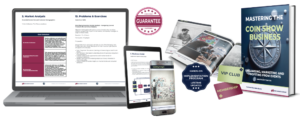









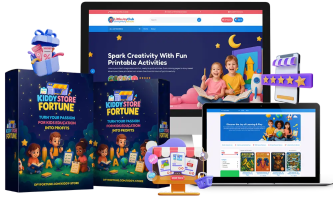

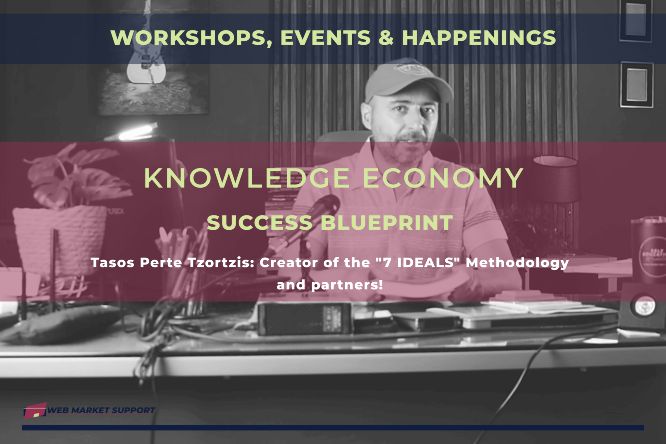
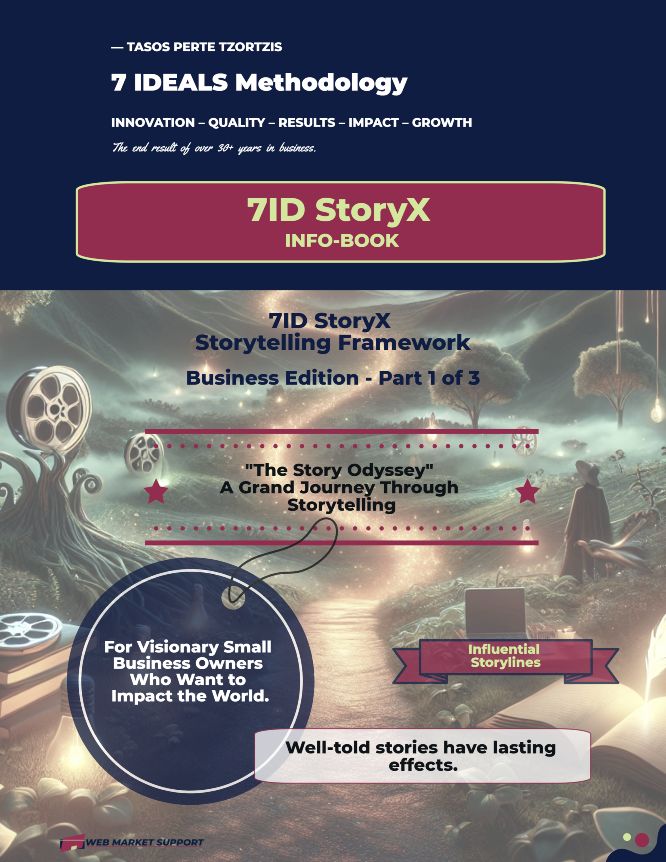
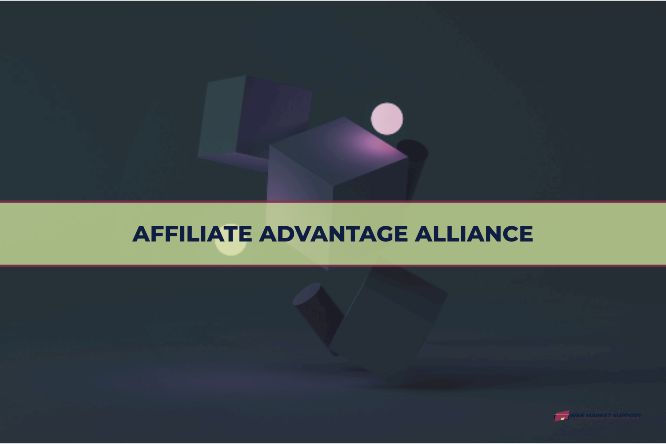
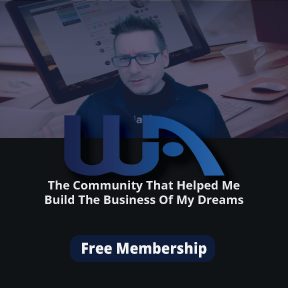
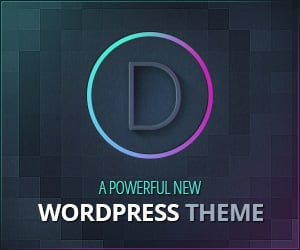
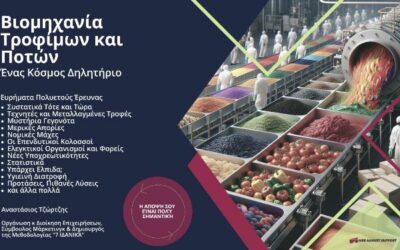
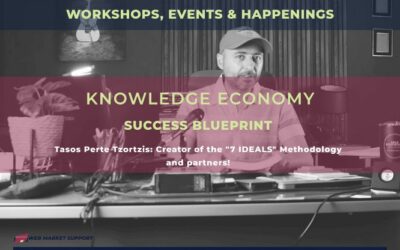
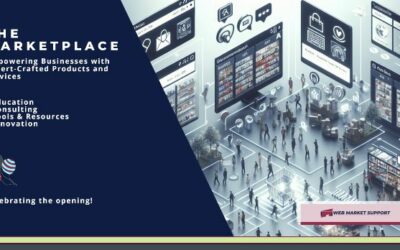
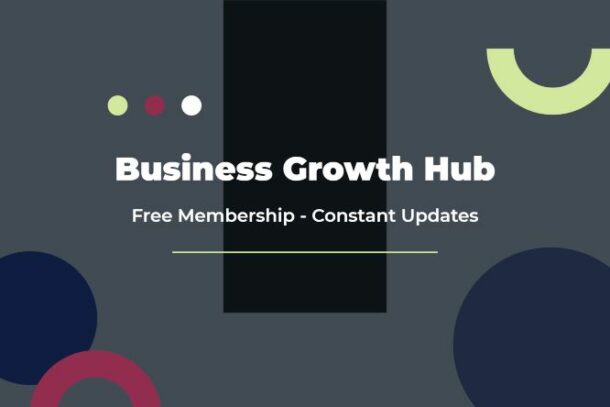
0 Comments